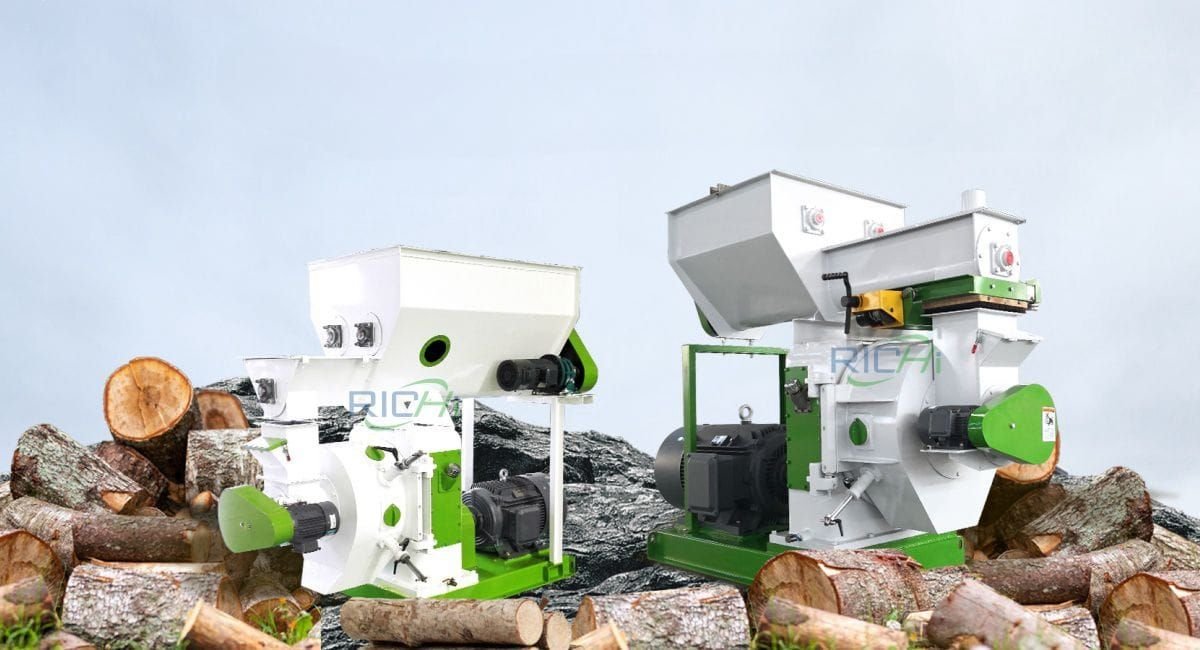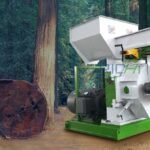Wood pelletizer machines are vital in the biomass industry, converting wood chips, sawdust, and agricultural residues into high-density pellets for energy production, animal bedding, and other applications. To maximize efficiency and ensure a stable operation, it is essential to implement proper maintenance practices, monitor performance, and make adjustments as needed. This article outlines key strategies to ensure the stable operation of a wood pelletizer machine.
1. Regular Maintenance
Regular maintenance is crucial for keeping a wood pelletizer machine running smoothly. A well-maintained machine is less likely to experience unexpected breakdowns and can operate at optimal efficiency.
- Scheduled Inspections: Establish a routine inspection schedule to check key components such as the pellet die, rollers, bearings, and gearbox. Regularly inspecting these parts helps identify wear and tear before they lead to significant issues.
- Lubrication: Ensure that all moving parts are adequately lubricated according to the manufacturer’s recommendations. Proper lubrication reduces friction, prevents overheating, and extends the lifespan of components.
- Cleaning: Regularly clean the machine to remove dust, debris, and residual materials. This helps prevent blockages and ensures that the machine operates efficiently. Pay special attention to the die and rollers, as buildup can affect pellet quality.
2. Monitor Raw Material Quality
The quality of raw materials used in the pelletizing process significantly affects the performance of the wood pelletizer machine.
- Moisture Content: Monitor the moisture content of the raw materials. Ideally, wood pellets should be produced from materials with a moisture content of around 10% to 15%. Excess moisture can lead to poor pellet formation and increased wear on the machine.
- Material Consistency: Ensure that the raw materials are consistent in size and composition. Variations can cause feeding issues and affect the quality of the pellets produced. Consider using a hammer mill to grind larger pieces of material into a uniform size before feeding them into the pelletizer.

3. Optimize Operating Conditions
The operating conditions of the wood pelletizer machine play a critical role in its stability and efficiency.
- Temperature Control: Monitor the temperature of the machine during operation. Excessive heat can lead to component failure and affect pellet quality. Ensure that the cooling system is functioning correctly to maintain optimal temperatures.
- Pressure Settings: Adjust the pressure settings of the rollers and die to ensure proper compression of the raw materials. If the pressure is too low, pellets may not form correctly; if too high, it can lead to excessive wear and potential damage to the machine.
- Feeding Rate: Maintain a consistent feeding rate to prevent overloading or underfeeding the machine. An uneven feed can cause fluctuations in pressure and temperature, leading to instability in pellet production.
4. Train Operators
Proper training for operators is essential for ensuring the stable operation of a wood pelletizer machine.
- Operational Training: Provide thorough training on the operation of the machine, including how to start and stop the machine, adjust settings, and monitor performance. Operators should understand the importance of maintaining consistent feeding rates and monitoring raw material quality.
- Safety Protocols: Train operators on safety protocols to minimize the risk of accidents and injuries. This includes the proper use of personal protective equipment (PPE) and understanding emergency shutdown procedures.
- Maintenance Procedures: Educate operators on routine maintenance tasks, such as lubrication and cleaning, to ensure that they can perform these tasks effectively and recognize when professional maintenance is needed. (Related post: complete wood pellet production line)
5. Implement Monitoring Systems
Using monitoring systems can help maintain the stable operation of a wood pelletizer machine by providing real-time data on performance.
- Performance Metrics: Implement monitoring systems that track key performance metrics, such as production rates, energy consumption, and temperature. Analyzing this data can help identify trends and potential issues before they escalate.
- Automated Alerts: Consider using automated alert systems that notify operators of any deviations from normal operating conditions. This allows for quick intervention to address issues and maintain stability.
6. Keep Spare Parts on Hand
Having spare parts readily available can minimize downtime in case of component failure.
- Critical Components: Identify critical components that are prone to wear and tear, such as the die, rollers, and bearings. Keep a stock of these parts on hand to facilitate quick replacements when needed.
- Supplier Relationships: Establish relationships with reliable suppliers to ensure that replacement parts can be obtained quickly and efficiently. This reduces the risk of extended downtime due to waiting for parts to arrive.
7. Document Maintenance Activities
Keeping detailed records of maintenance activities is essential for ensuring the stable operation of the wood pelletizer machine.
- Maintenance Logs: Maintain logs of all inspections, maintenance tasks, and part replacements. This documentation can help identify trends in wear and tear and inform future maintenance decisions.
- Performance Records: Document performance metrics over time to track changes and identify potential issues. Analyzing this data can help optimize operating conditions and improve overall efficiency.
Conclusion
Ensuring the stable operation of a wood pelletizer machine requires a combination of regular maintenance, monitoring raw material quality, optimizing operating conditions, training operators, implementing monitoring systems, keeping spare parts on hand, and documenting maintenance activities. By focusing on these key areas, operators can enhance the efficiency and longevity of their machines, ultimately leading to improved pellet quality and reduced operational costs.As the demand for renewable energy sources continues to grow, maintaining a well-functioning wood pelletizer machine will be crucial for success in the biomass industry. By investing in proper maintenance and operational practices, businesses can ensure that their pellet production processes are efficient, reliable, and sustainable.


